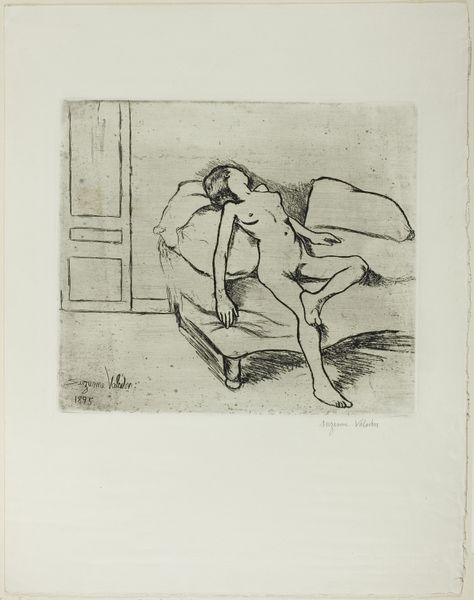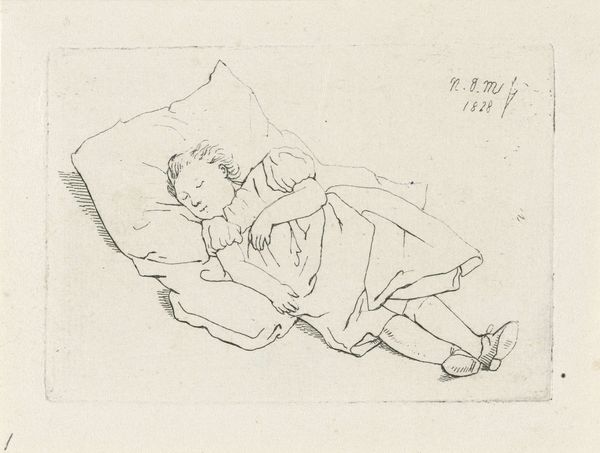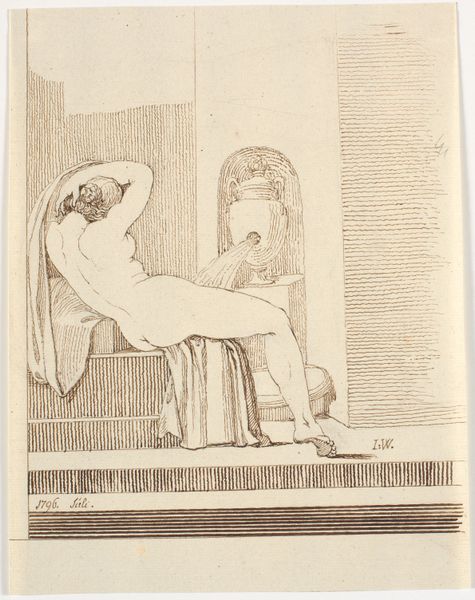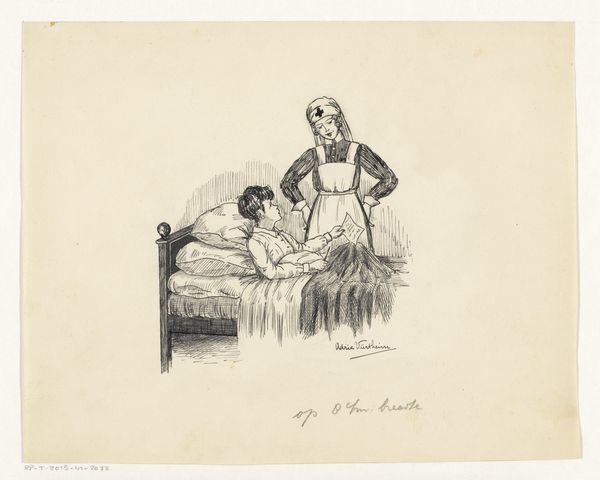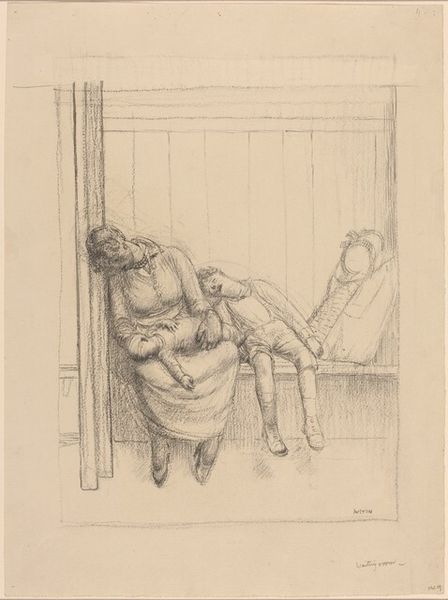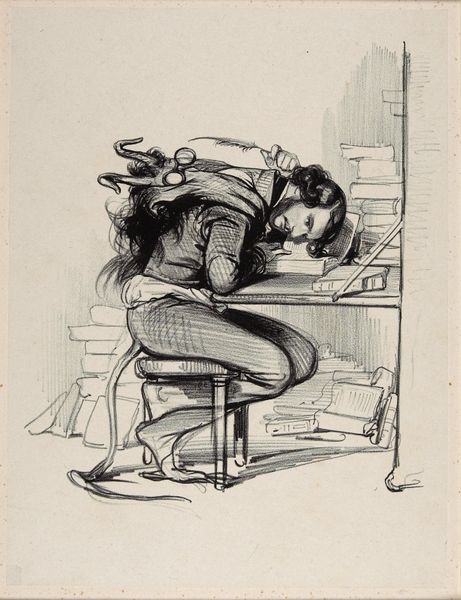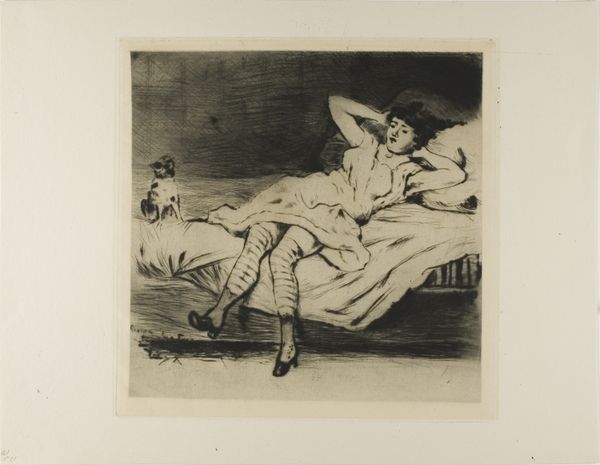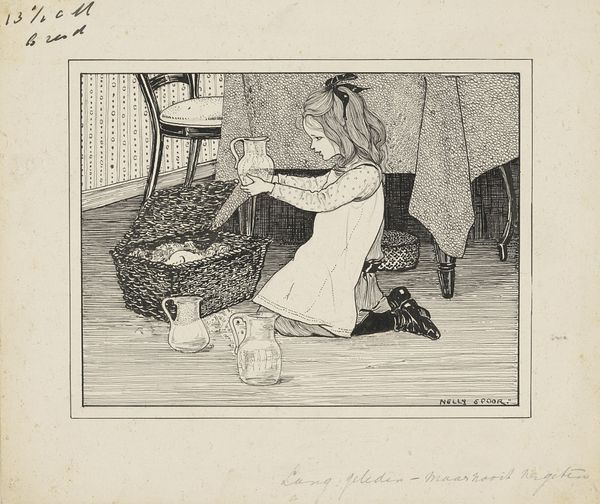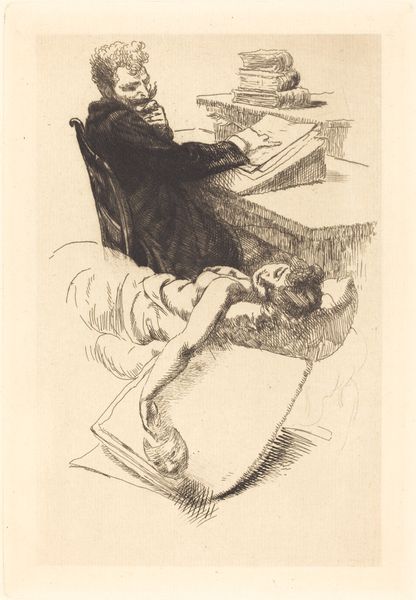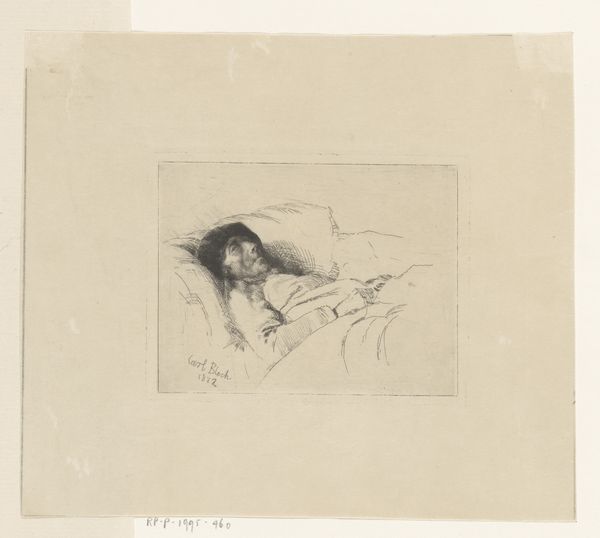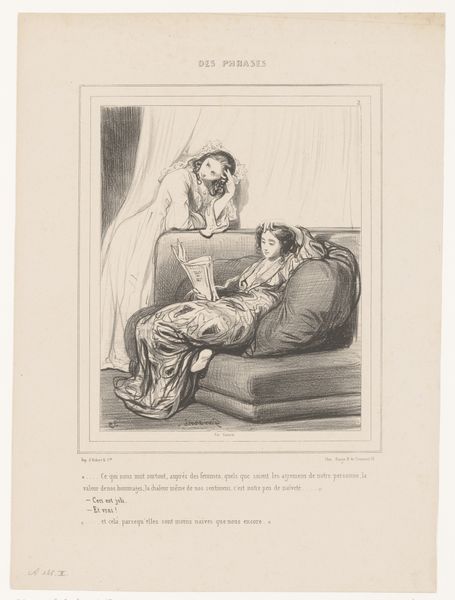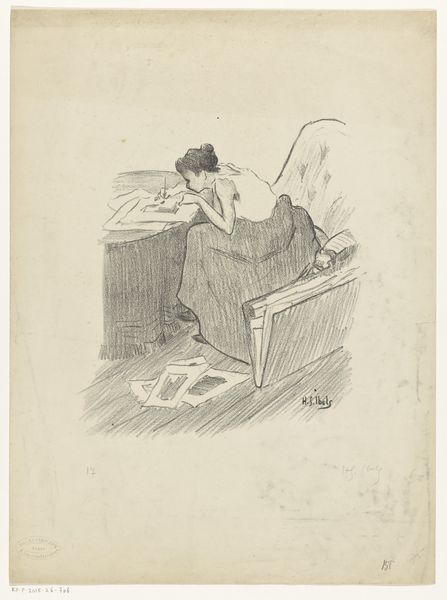
drawing, ink, pen
#
portrait
#
drawing
#
light pencil work
#
quirky sketch
#
dog
#
sketch book
#
figuration
#
personal sketchbook
#
ink
#
idea generation sketch
#
sketchwork
#
pen-ink sketch
#
sketchbook drawing
#
pen
#
genre-painting
#
storyboard and sketchbook work
#
sketchbook art
Dimensions: height 229 mm, width 177 mm
Copyright: Rijks Museum: Open Domain
Curator: Here we have a sketch from Nelly Spoor, likely made between 1895 and 1950. It is pen and ink on paper, and depicts a sleeping girl. Editor: What a poignant vignette of childhood! The soft lines give it a dreamlike quality, almost as if we're peering into the girl's imagination itself. There's a subtle melancholy to it. Curator: Notice how the pattern on the chair almost mimics the curls of her hair, creating a visual echo that enhances the sense of youthful innocence and vulnerability. Her symbolic doppelganger, if you will. Editor: Yes, the floral print feels particularly charged. In the Victorian era, flowers in art were laden with meaning. Considering this work's date range, it invites interpretations relating to childhood innocence but also societal constraints placed on women from a young age. What potential is being suppressed in sleep, only to be constrained later? Curator: I am interested, though, that her eyes are gently shut, her expression peaceful. There is no symbolic language to reveal any potential oppression; perhaps we could interpret this artwork through the lens of care, not fear? We have a trusting dog jumping to greet her, and soft doll that shares her solace. What does her peaceful demeanor tell us? Editor: Even so, that the symbols exist within her close vicinity—her faithful pet and soft doll—underscores how childhood is inherently entangled within adult systems, as the dog jumps up the doll sits static, together acting as future symbols for womanhood. It reminds me how art from the turn of the century, even depictions of apparent innocence, participated in creating and enforcing the social norms for women and the expectations thrust upon them. Curator: A critical perspective, to be sure, yet one can also find comfort and recognition in such quiet, tender sketches that are devoid of symbolism for what will eventually pass. And I must agree, despite everything, I’m quite moved by how this artist allows us entry into her personal sketch book with ease. Editor: That's fair. Maybe the enduring appeal comes from the push and pull between these conflicting interpretations, between childhood as a fleeting moment of autonomy and innocence, and a pre scripted fate? Perhaps that unresolved tension speaks volumes.
Comments
No comments
Be the first to comment and join the conversation on the ultimate creative platform.
